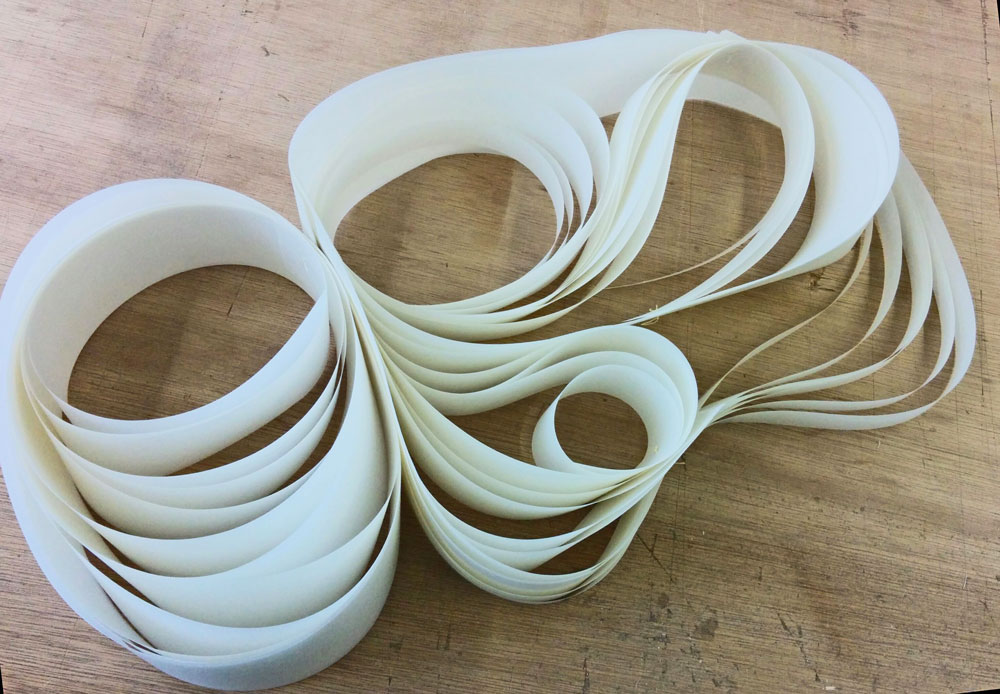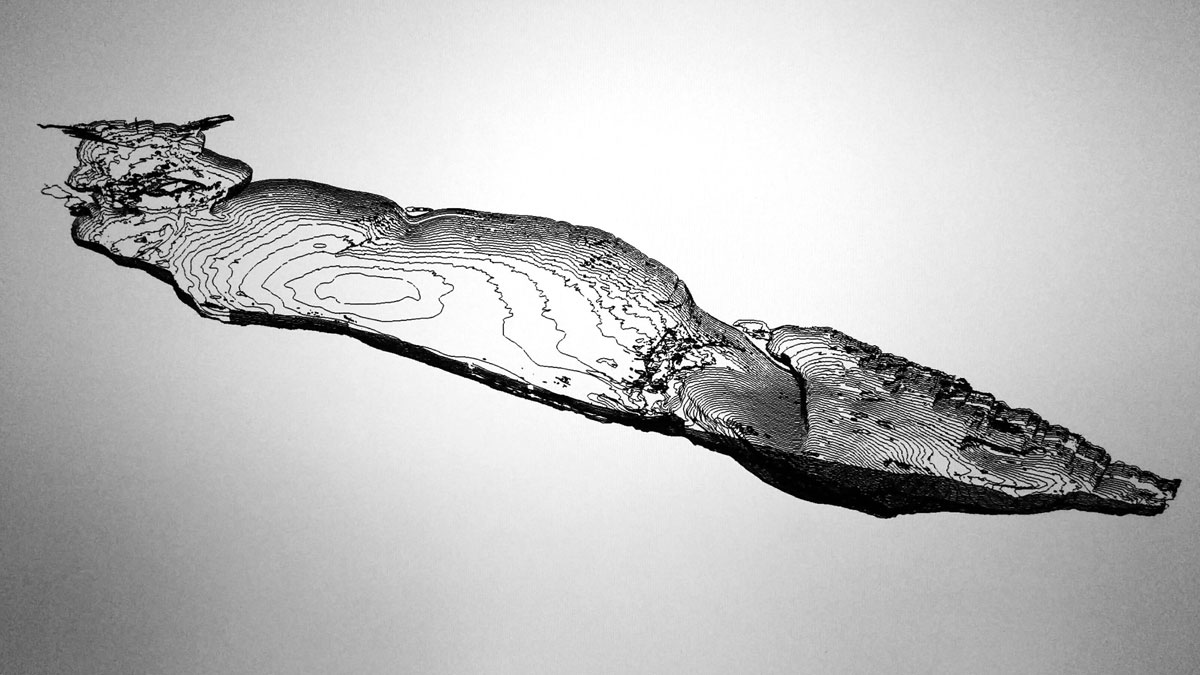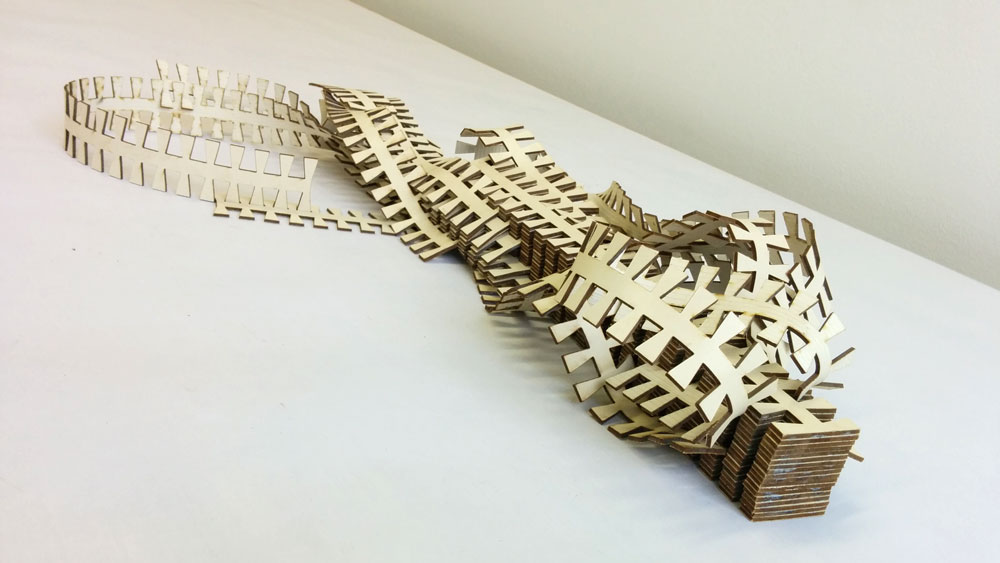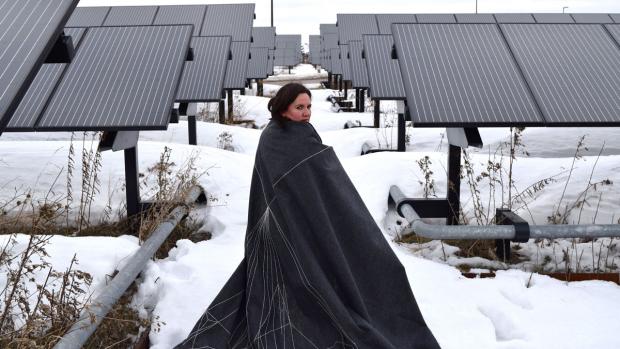Spotlight: Alicia Marván
Alicia Marván’s studio at University at Buffalo’s Center for the Arts can barely contain the models, works in progress, and projects in which the artist, curator, designer and performer is immersed. Marván, who grew up in Mexico City, came here to attend UB’s MFA program.
At 20, she moved to San Diego, California, to pursue her early interest in studying dance—she ended up earning her bachelor’s in dance and performance at SUNY/Empire State College.
World travels, artistic endeavors, and an active career ensued. We now find her at 38—a calm yet energetic presence—preparing for her MFA thesis show.
Amidst seamstress mannequins clad in partially completed garments, drawings and schematics on the wall, jewelry, and scaled-down models of larger works on a table, we spoke about her art, her projects, and her future.

How does it all fit together? “There is a common thread throughout all of my work,” she says. “It’s usually site-specific, and it always has to do in some way with the human body. All of these things are in varying proportions to the body: jewelry is smaller than the body, clothing or garments are the same size, and the play-spaces I’m designing for my MFA project are environments.”
To create this sculptural project, she’s sourcing new smart-textiles, which feature interactive weaving. Her desire to broaden her artistic practice towards an even more interdisciplinary direction was the motivation for her applying to UB’s MFA program.
“I had been looking for an MFA for about three years,” she says. “I learned about UB’s program in 2012, while in a group show in Toronto with some of the fantastic faculty, including Millie Chen, who is now one of my committee advisors.”
Marván has found many supportive faculty and advisors at UB across related departments, including professor of architecture Nick Bruscia and department of architecture chair Omar Khan, as well as art department faculty Warren Quigley, Reinhard Reitzenstein and Stephanie Rothenberg.

“The UB program is very inviting,” she says. “It offers you the ability to create your own program—my MFA is in sculpture and emerging practices. And you can branch out—take courses in poetry, Dutch, whatever is interesting. And at the same time, rather than being theoretical, it’s studio-based.”
Marván’s early influence came from the “interdisciplinary” examples set by her family. Her father was an engineer who designed machines; he is passionate about construction and remodeling, she says. Her mother was a teacher who specialized in human development, psychology and pedagogy, and whose interests include gardening, and other cultures.
In this environment, surrounded by family and friends—artists, architects and designers—Marván says, “It was always, ‘look at this building,’ ‘look at this plant,’ ‘let’s travel’; I was raised to appreciate these aspects of life.”
“As a teenager, I photographed people in spaces—I saw how they related to each other, and the architecture. I was interested in contrast, composition, scale,” she says.
She became even more interested in “place” and site-specificity after her first trip abroad, alone, at age 17. “My mother sent me to study in Italy; I sat and drew at the Piazza Navona. I am inspired by traveling and seeing new places.”

Her interest blossomed to dancing and choreographing in and for particular spaces. She also realized that intrinsic to the art were the clothes one wore while performing.
“As a dancer/choreographer, I was the person in the public square, directing ‘social choreography’ relating to politics, to built or natural environments,” says Marván. “What we wore was important—I’ve since done projects where I only designed the clothes. I’m now interested in clothing as artwork itself.”
Marván’s larger artistic impetus is experimental and community-minded. “I ask myself ‘how can this be inspiring, beneficial, or fun?’” she says. “It’s about communicating human topics—providing objects and situations where human interaction fosters cultural development or understanding.”
It’s not surprising that Marván has an active international career, collaborating with artists from a variety of disciplines worldwide.
She directs Mexico’s Guapamacátaro Center for Art and Ecology, and is an associated artist with Lower Left Performance Collective. Her resume boasts an impressive array of additional support from cultural and academic institutions in Brazil, Chile, Germany, South Africa, and Uruguay, among others.
A future area of focus for her is drone-assisted creations. She’s in the research stage, and has sourced several programs where she sees herself continuing both academically and artistically.
“I call them ‘SWARMS’—Sculptural Woven Assemblages by Robotic Media Systems,” she says. “I’m considering a PhD at either Harvard or Cornell. I hope to get a summer internship at ETH University in Zurich, where they’re testing this technology to create architecture, like woven tensile structures.”

